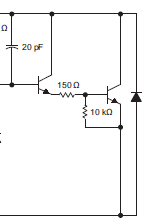In my application, I will use a PNP to sink 4A current based on above configuration from page 29 of TL431 datsheet.
My question is when the Ic current of PNP collector is around 4A the Ib current of PNP base is around 200mA.
How the TL431 is going to sink that 200mA base current?
Many thanks for your answer.


